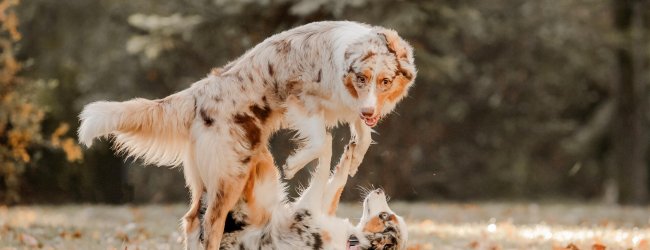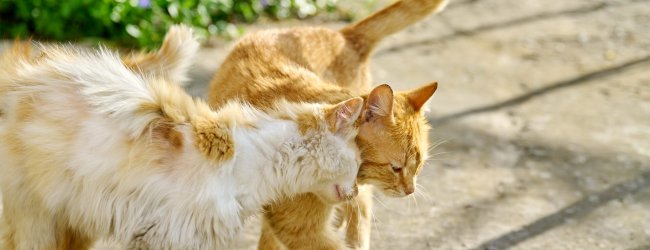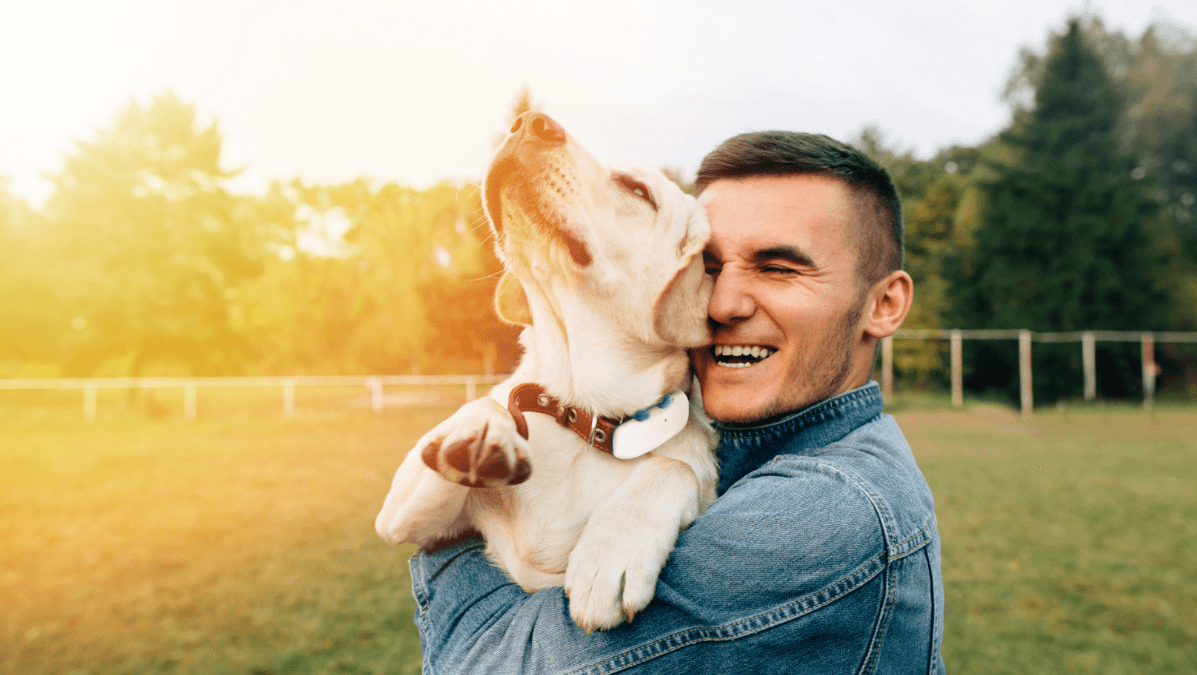8 Best Tips On How To Protect Dog Paws In Snow
Planning a ski trip with your buddy this fall or winter? Here's how to keep your pup's paws happy and healthy in the snow.
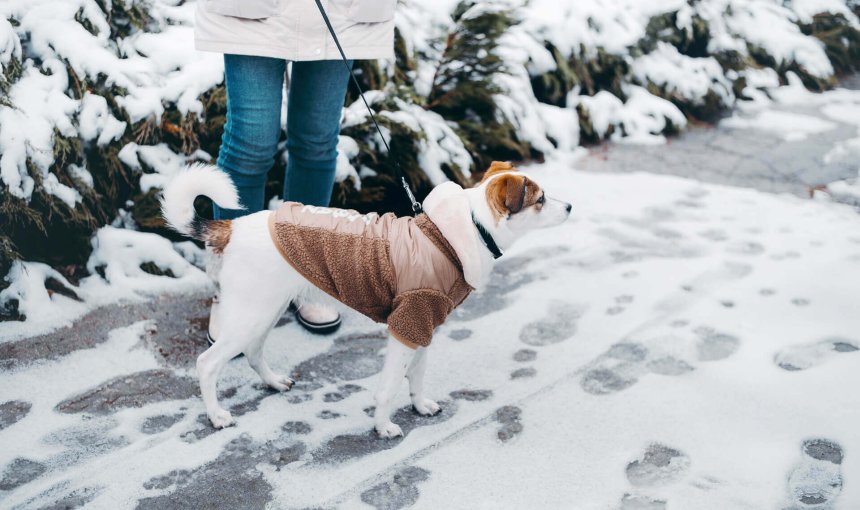
As a dog parent, you know paw care is key to keeping your furry friend happy. You know it’s important to check, groom, and protect their paws regularly. But what about protecting your dog’s paws in snow? During fall and winter, dogs paws are especially vulnerable. (Especially if you take them along with you when you’re off hiking or skiing.)
Because just like us, dogs are sensitive to cold. Exposure to cold air, rain and snow can cause chapped paws and dry, itchy skin. Then there’s things like ice, chemicals and melting salts that can hurt your dog. But the good thing is, we can show you how to protect dog paws in snow, both during fall and winter.
Does snow hurt dog paws?
It’s complicated. The winter season, in addition to snow, can also bring some risks for dog paws that are worth watching out for. You’ll want to protect your dog’s paws from these potential hazards:
- Freezing temperatures and frostbite
- Toxic chemical agents on streets
- Ice-melting salt
- Sharp ice
- Objects hidden under snow
8 ways to protect dog paws in snow and winter
The salt used to melt ice on roads and sidewalks is not kind to dog’s paws, and nice winter walks can become downright dangerous if your dog starts licking chemicals from ice-melting agents.
In any case, you can keep your dog more paw-sitive by regularly following this simple 4-step paw care routine.
1. Regular grooming
First of all, make sure your dog’s paws are winter-ready. Good grooming is essential for healthy winter feet. Trim long-haired dogs to make it harder for bits of ice, salt crystals or ice-melting chemicals to dry and cling to their skin. Take special care when doing their feet, and trim any extra hair growing on the paws.
Read more: Dog grooming tips you can easily do at home.
2. Regular cleaning
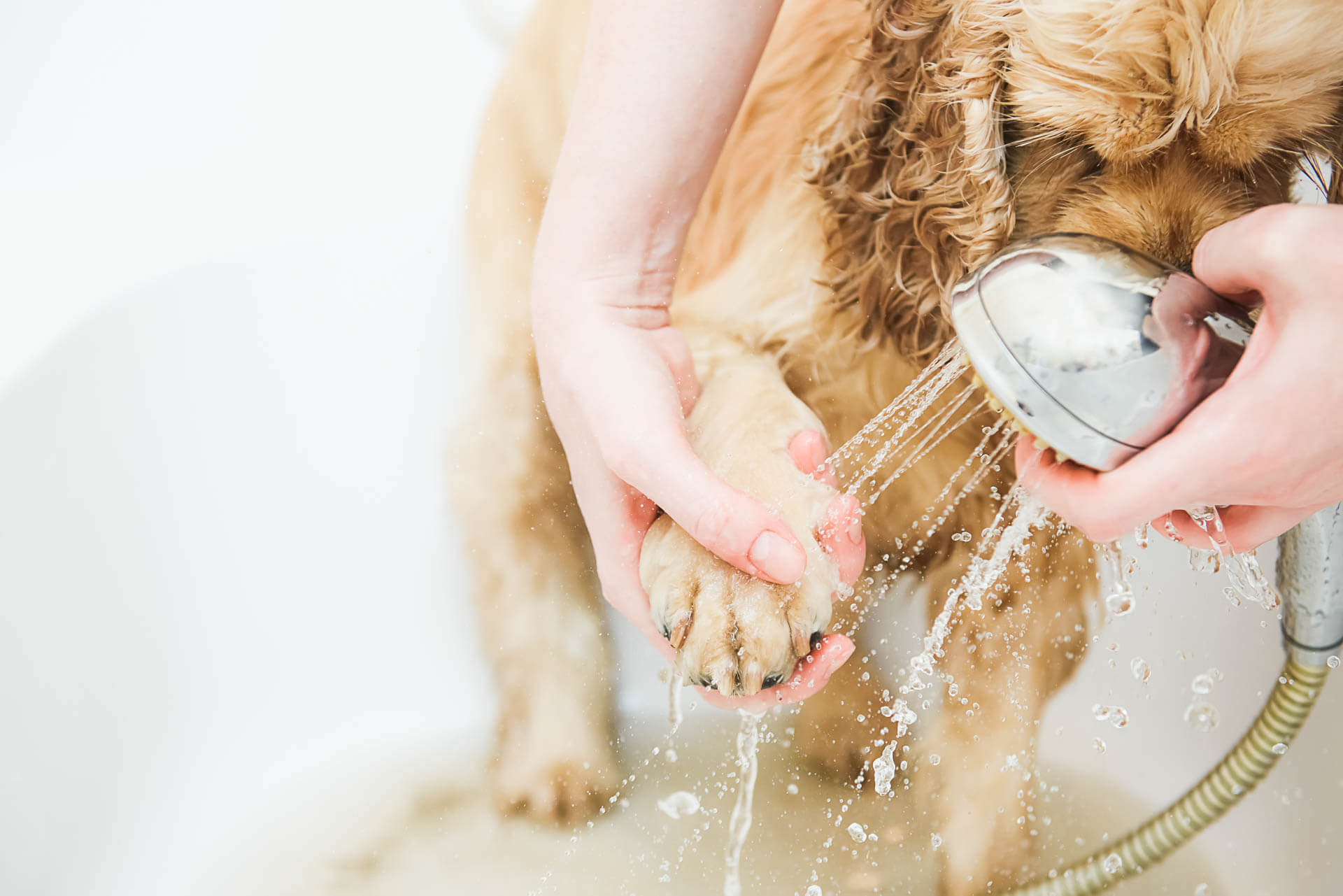
Whether walking through city or country, avoiding all the ice-melting salt on the roads can be almost impossible in winter. So be sure to clean your dog’s paws as soon as you’re back home. Warm water and a cloth should do the trick. Then of course, make sure your dog doesn’t stay wet for too long. Dry your furry friend off with towels and let them sit by the fireplace if you have one.
While walking, have a towel on hand to immediately clean any snow, salt or debris that gets on your dog’s paws.
3. Short dog walks
Dogs left in the cold for long periods of time are also at risk of frostbite on paws and hypothermia. In general, dogs should avoid spending hours out in the cold. In winter, frequent short walks are better for your dog than a single long daily walk.
With the sun going down earlier in fall and winter, make sure you’re familiar with the possible dangers of walking your dog in the dark. And get your dog a GPS dog tracker so you can always keep an eye on them, day or night.
Besides helping you track your dog, your Tractive GPS also helps you encourage your dog to stay more active. With regular activity tracking, you can get a clear picture of how often your buddy’s been on the move all day. So you can both ensure your dog’s getting enough exercise – but also catch on to a dip in their regular activity more quickly. (Which might even indicate your dog might be sick.)

“It can be easy to miss out on changes in your dog’s or cat’s regular activity – or just if they’re on the move more or less than usual. So we’ve set up Activity Degradation alerts for when your pet’s active minutes drop significantly. They can help you intervene in a situation where your pet might be struggling with an infection or even just pain.”
– Sebastian Raab, Product Manager at Tractive & occasional pet-sitter
Because during cold months like fall and winter, staying active is a great way to ensure your dog isn’t suffering from stiff joints and discomfort. Even just a few minutes of playtime per day can help keep them happy and healthy. If it’s too cold outdoors, indoor games like hide and seek or tug of war work just fine. Besides keeping you and your dog active, it’s also a great way to spend some quality time with your buddy.
4. Moisturize dog paws
Many of us need a little extra moisture in winter, and we use creams, lotions and moisturizers to keep our skin soft and healthy. Our furry friends can benefit from this too! Use a store-bought dog paw balm, such as Vitamin E cream1, or a homemade recipe like the one below to protect your dog’s paws in snow.
Homemade dog paw balm recipe
Ingredients:
- 80 ml olive oil
- 30 g organic shea butter
- 15 g beeswax
- 20 g pine resin (collected or ordered online)
- 3 tsp marigold (don’t have any? ask your neighbor if they have some in their garden)
- 1 small jam glass to store the cream
Instructions:
- Put all the ingredients together in the glass.
- To melt and combine the ingredients, put the glass inside a bowl of hot water for approximately 30 minutes (being careful not to get any water into your mixture).
- When you notice the cream starting to get a medium consistency (not too thick and not too runny), take it out, put it in another glass and leave it to cool down.
This recipe makes 150 grams of homemade dog paw balm. All these ingredients are very powerful when used together; some have anti-inflammatory properties, while others have a calming effect on the skin.
The balm can be applied anytime; after a bath, after exposure to cold air, or just before you put on your dog’s shoes. Your pup will love being pampered after receiving their dog paw moisturizing treatment!
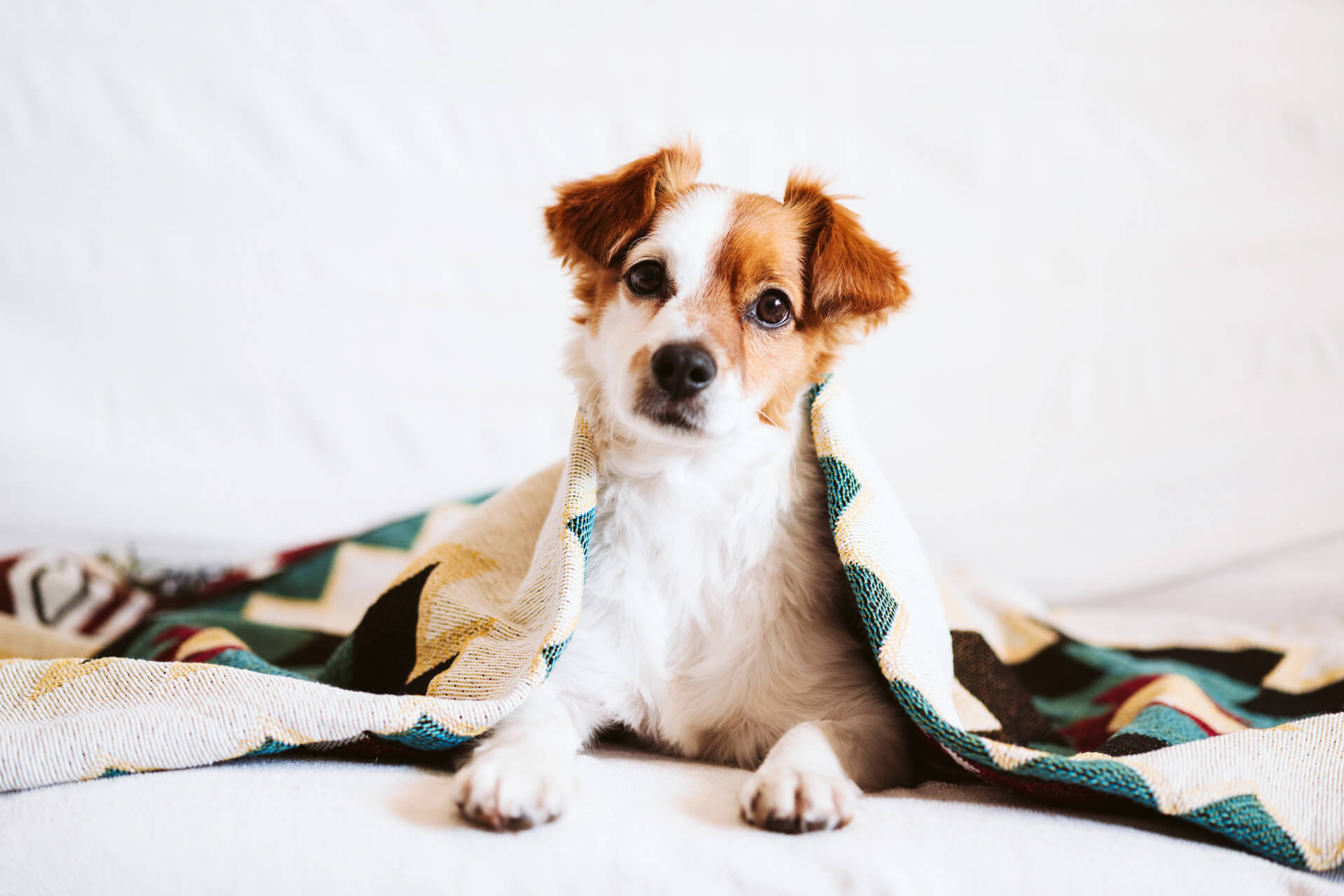
5. Dog boots
Just as wearing boots in the winter protects your feet, dog shoes or booties will prevent injury and protect dog paws in snow. Dog boots will protect your dog’s paws from salt, ice balls and sharp items that may be hidden under the snow. Your pup may not like the boots at the beginning but, with a little time and patience, you can train your dog to love wearing their booties!
Dog boots are also an excellent way to prevent your dog from slipping or falling on the ice. During cold months and when it’s icy or snowy outdoors, the roads and paths around you might get more slippery. Which increases the risk of injuries if you (or your dog) take a tumble.
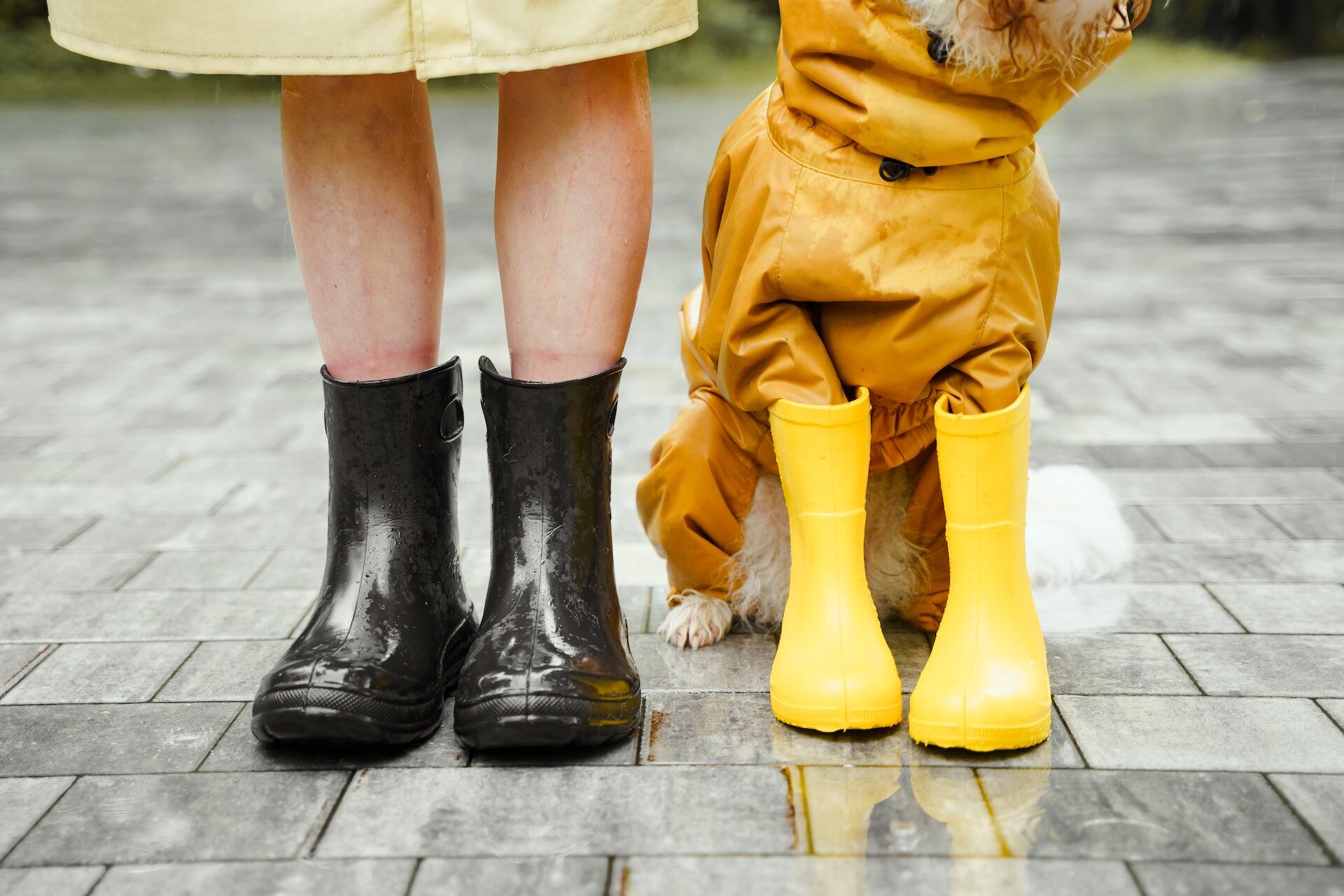
Your dog’s paws are also likely to come in contact with any salt you sprinkle to melt ice and snow. However, be mindful that this salt might irritate the pads of your dog’s paws. (And might be toxic if your dog licks their paws by accident.) Make sure to invest in a good, solid pair of rubber booties to help your dog keep up with you during your winter walks – and also protect them from any harsh chemicals and ice.
Don’t keep your dog’s boots on for too long either. Rather, wash them thoroughly after your walk to remove any ice or salt.
You could also get a matching dog jacket to go along with your new dog shoes!
6. Beware the cold
It’s good to remember that if the weather is too cold for you, it’s probably too cold for your dog. Our furry companions should remain indoors as much as possible during the winter months and never be left alone in vehicles when it’s really cold.
See how cold is too cold for your four-legged sweetheart.
7. Be mindful of your friend
During winter time, try to care for your dog’s feet like you do your own. When your feet get cold, sore, and blistered, the discomfort can make you miserable. Your dog feels the same way. Pay attention to your dog’s behavior to check for any signs of discomfort or distress. Show your dog a little love during winter by taking good care of their paws.
8. Stay on top of your dog’s safety in case they bolt
Dogs run away for all sorts of reasons – but here are some reasons you might find them bolting during the cold season:
- Prey drive. Some dogs react instinctively to the smallest sight, sound, or smell. Breeds like Border Collies and Pointers have been trained over years to hunt, chase, and capture prey. So they might be more likely to run off after a woodland animal or a stray cat in your city during these months.
- Young age. If you’ve just adopted a puppy who’s from a snow-loving dog breed, they’re more likely to bolt because of a lack of training. (And due to their curious instincts.) For example, even breeds like Labrador Retrievers love the snow – so these puppies might be more likely to run off to dive right into a far-off pile somewhere.
- Lack of training. Untrained snow-loving dogs might struggle against a leash – or run off after some interesting sight or smell. (Whether out in the wild or in your city.)
Now you might think your dog’s sense of smell and homing instinct can help them find their way back home. But when it’s snowy outdoors, it might actually get in the way of your dog’s sense of smell. Which makes it easier for your dog to get disoriented – and lost. Increasing their risk of hypothermia and even death the longer they’re lost outdoors.
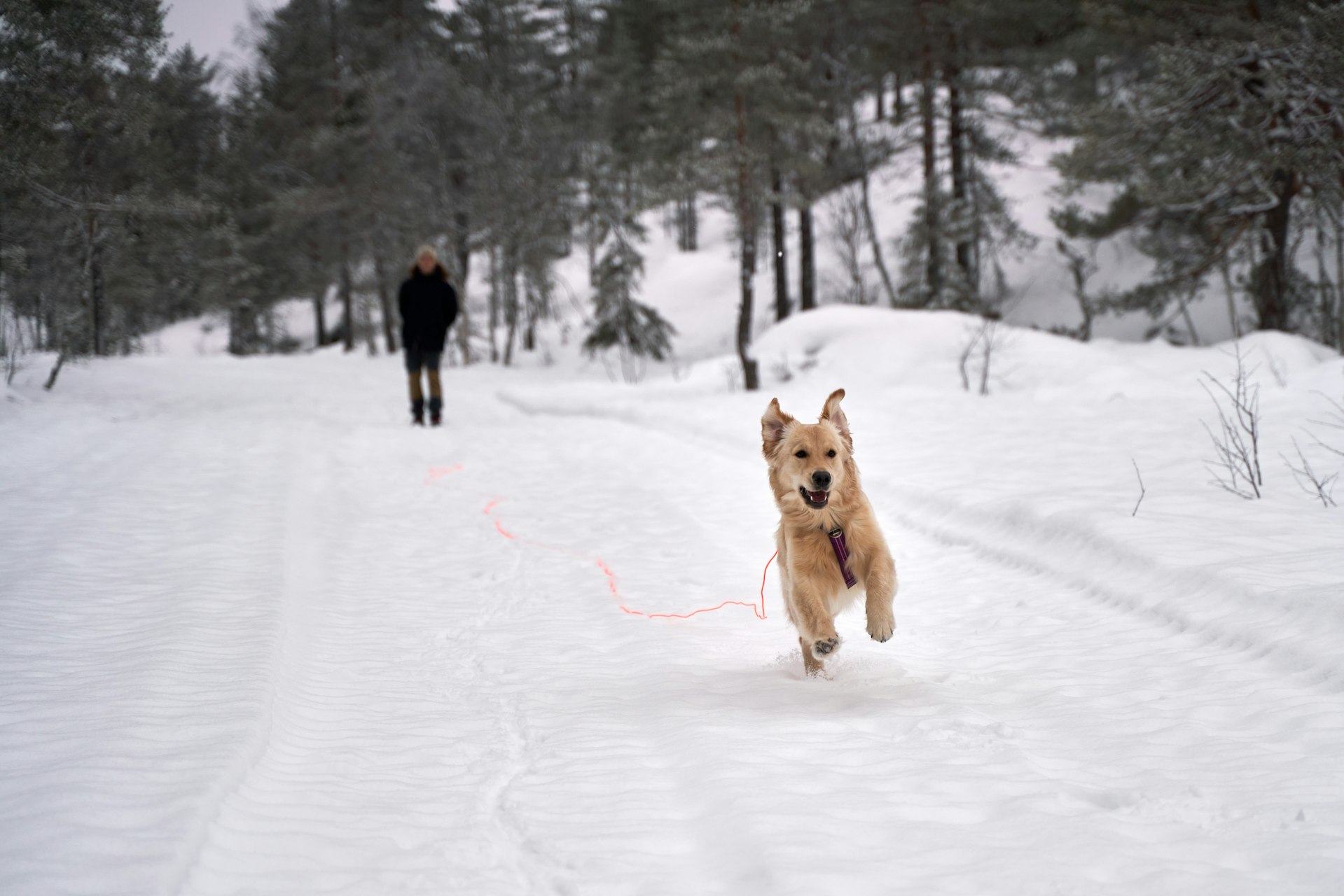
So during the cold months, we’d recommend keeping your dog on-leash. (Yes, even your snow-loving outdoor dog.) Or, for greater peace of mind, consider investing in a dog GPS tracker with LIVE tracking. So you can track your wandering buddy wherever they roam – and never feel the pain or fear of losing your dog ever again.
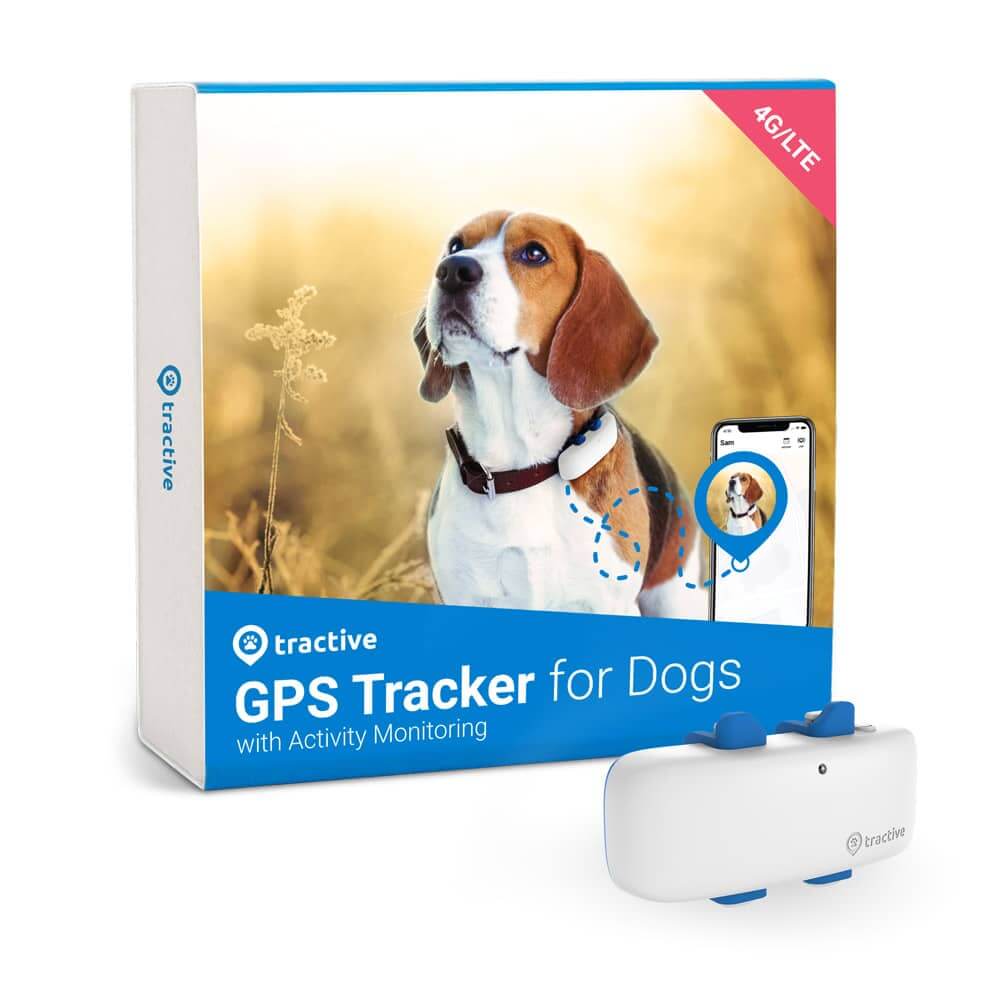
Always know where your dog is
Follow every step in real-time with unlimited range. Get alerts if they wander too far. Keep them happy & healthy with Wellness Monitoring. And let others – like walkers or sitters – keep an eye on your dog too.
The Tractive GPS has even saved the lives of dogs and cats who’ve wandered off or bolted away from safety. Like Imogen, a high-energy Borzoi who ran off past her yard – and crashed through the ice into a frozen lake nearby.
Luckily, her mum was able to quickly track her down with the help of her Tractive device. Using it’s Location History, she was able to quickly find Imogen and rescue her from drowning and freezing.
Read the full story of Imogen and how Tractive’s life-saving technology is keeping pets safe around the world. And for more tips on how to protect dog paws in snow, check out the video below:
More winter care tips for dogs
- Checklist: 8 Winter dog safety tips you need to know
- Winter holiday with your dog
- 4 fun dog-friendly winter activities to try with your dog in snow
- How to find the perfect dog jackets for winter
- Dogs and cold weather: How cold is too cold for dogs?
- 15 best outdoor dog breeds that can live outside
- Can my dog catch my cold? Get this answered once and for all!
Found this article helpful? Share it with another snow-loving dog parent!
